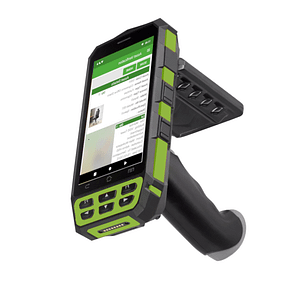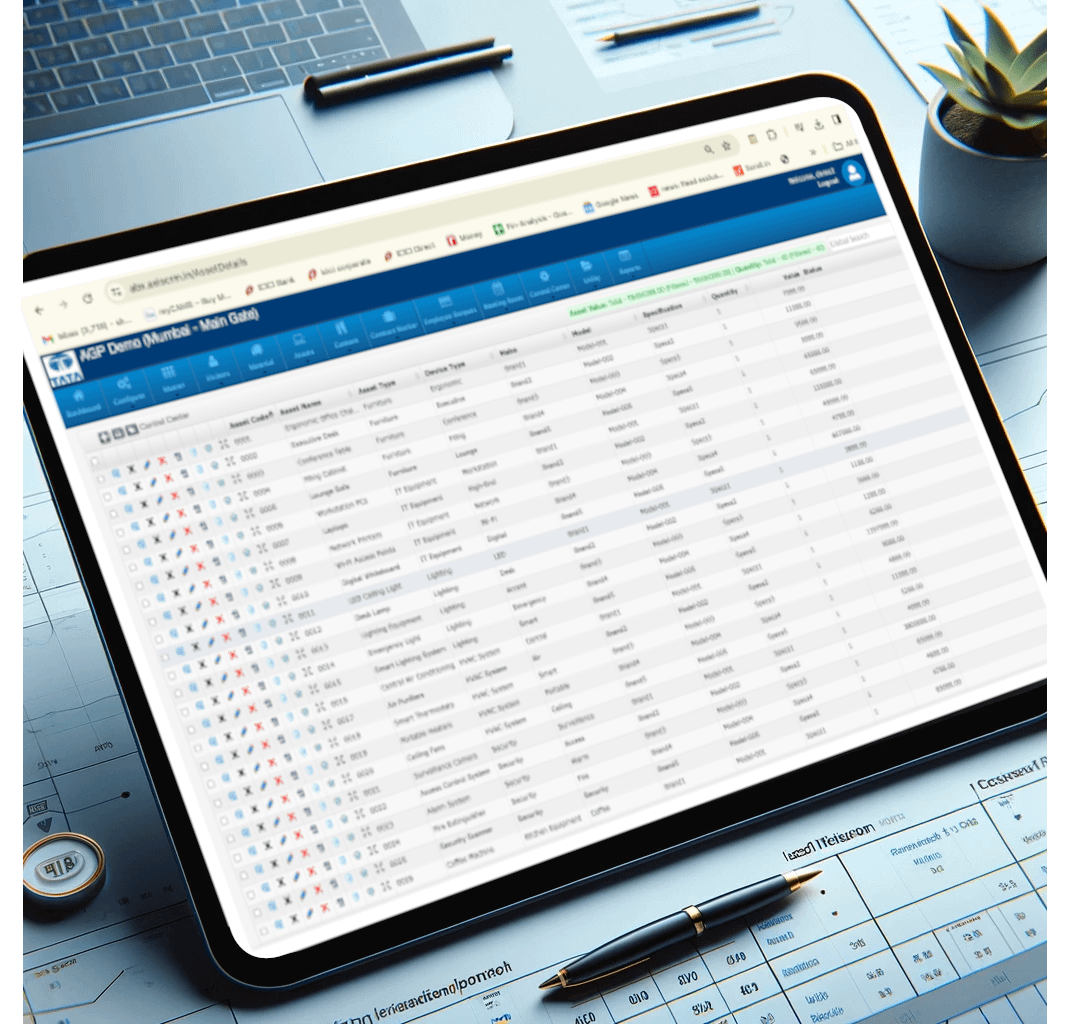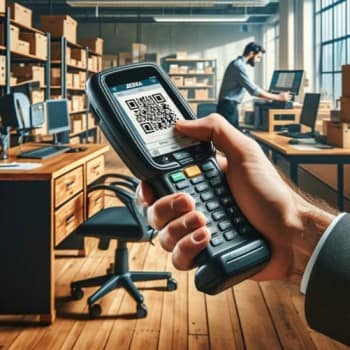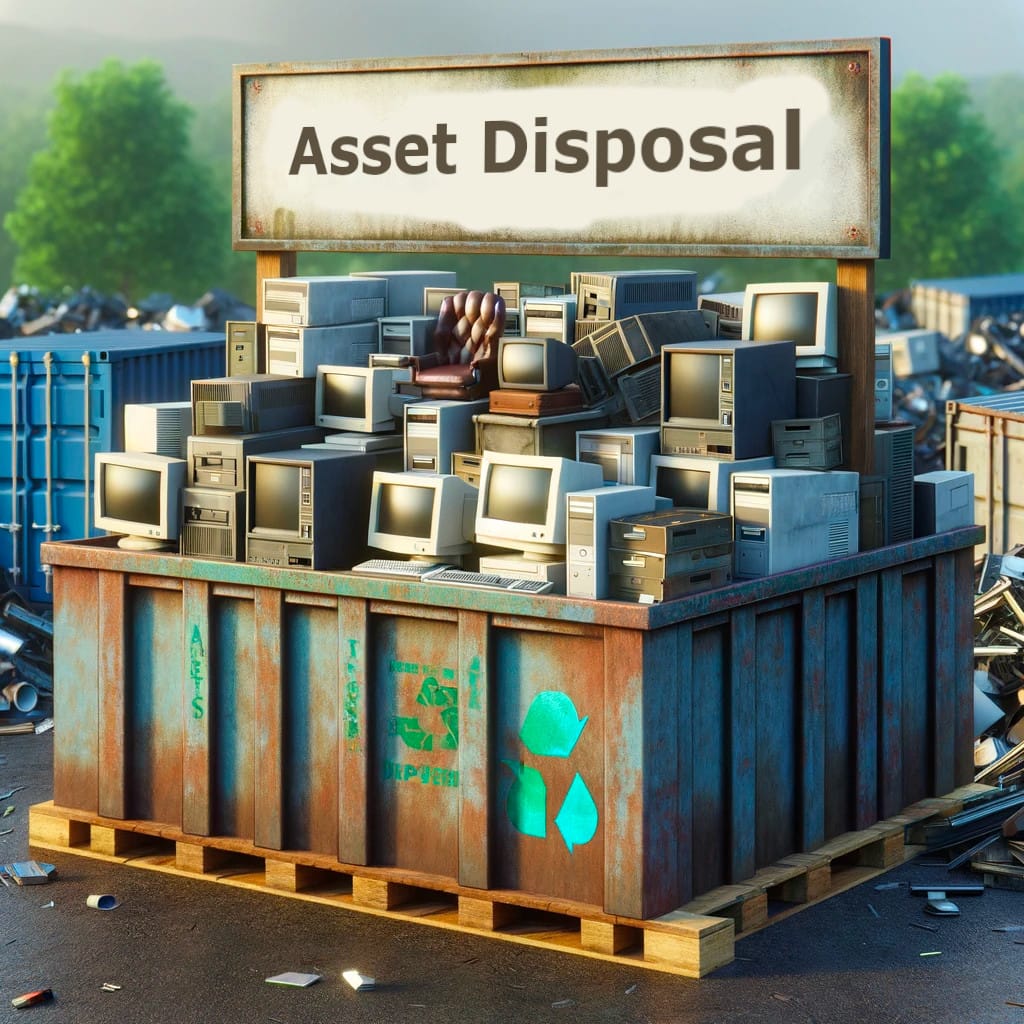
Enterprise Asset Management Software
AXIS Gatepass provides a feature packed Enterprise Asset Management Software (EAM) to create, tag, maintain, find, track history and periodically reconcile your valuable Assets.
Enterprise Asset Management software is a comprehensive tool designed to optimize the lifecycle of organizational assets. From fixed asset registers to IT assets, this sophisticated software streamlines asset tagging and ensures precise asset reconciliation. We provide EAM solutions that facilitate detailed Asset tracking and management, allowing businesses to maintain an accurate inventory of their assets. By leveraging EAM, companies can enhance operational efficiency, reduce costs, and improve asset utilization. This strategic approach to asset management empowers organizations to achieve greater financial accuracy and operational excellence, making EAM software an essential component of modern business infrastructure.
Features of Asset lifecycle management

- Cloud or locally hosted Asset management software
- Asset control center for managing all your assets
- Create or Import Asset Register
- Define upto 5-levels of asset locations
- Allocate Assets to employees or custodians
- RFID or non-tearable Asset tags
- Generate Asset Labels with QR Code (design your own tags)
- Track asset movement history
- Store and get reminders for Asset AMC/Warranty/Insurance
- Scrap asset with multi-level approval workflow
- Mobile App for Asset Verification and reconciliation
Asset Tag Generation
Asset tags play a crucial role in asset management by providing a means to identify, track, and manage assets efficiently. They come in various forms, designed to suit specific needs and environments. Barcode labels are common for general inventory tracking, offering simplicity and cost-effectiveness. RFID tags enable wireless tracking, ideal for real-time inventory management. Metal tags withstand harsh conditions, suitable for outdoor or industrial assets. Tamper-evident tags secure assets against unauthorized removal, and QR codes offer easy scanning with smartphones, facilitating asset management on the go.
The video on the right shows how Asset Tags are generated using our Asset Management software.

What is Asset Reconciliation?
What is Asset Geo-tagging and how is it helpful?
Geo-tagging an asset informs you the last stored geographical location of your asset. This can be an extremely useful feature in locating your Assets, especially your missing and untraceable Assets. Geo-tagging your assets is a powerful tool for enhancing the visibility, security, and efficiency of asset management.
What is GPS-Tagging of Assets?
For high-value Mobile Assets GPS tagging provides real-time location data, allowing immediate tracking of assets. This is particularly valuable for managing fleets, ensuring timely deliveries, and enhancing the security of valuable assets.
Contact our Asset management Experts for more details on how to implement a geo-tag or GPS-Tag enabled Asset Management system. We can work with you to develop an end-to-end, cost-effective solution based on your custom requirements.


Essential use-cases of Asset Management System

Asset Control Center
The asset control centre is the central hub that provides complete monitoring, management and control of all your assets. It allows you to perform all the functions from procurement, allocation, Warranty & insurance to disposal of assets.

Asset Tagging
Asset tagging is fundamental to asset management. It involves creating unique identifiers for each physical asset to track them throughout their lifecycle. The application has a built-in tag designer to generate tags with barcodes or QR codes.

Asset Allocation
All the organisations’ assets can be allocated to employees, HODs or departments or custodians as per your company policy. Each allocation can have a specific validity. Asset managers can easily verify the location and current owner ot each asset.

Asset reconciliation
Asset reconciliation is a critical process to verify the physical presence of all the Assets defined in the accounting books. The process is used to check & correct discrepancies, ensuring financial integrity & compliance.

Asset Warranty & Insurance
The application manages asset warranty, AMC and insurance validity, documents and history. Authorised person receives timely notifications about expiring warranty, AMC and insurance of Assets.

Asset Disposal
When an asset reaches its end of life, it is essential to plan its upgradation, replacement or disposal (scrapping). The application provides a well defined approval workflow for disposal or scrapping of assets.
Frequently Asked Questions
What is IT Asset Management Software?
IT Asset Management Software helps organizations track, manage, and optimize their IT assets, such as hardware, software, and network components. It ensures efficient utilization, cost savings, and compliance with regulatory standards.
Why is asset management important for businesses?
Effective asset management reduces costs, minimizes security risks, ensures regulatory compliance, and enhances decision-making by providing accurate data about asset performance and usage.
How does IT Asset Management Software work?
The software automates the asset lifecycle, including asset tagging, inventory management, monitoring, and reporting. It integrates with other business systems to provide centralized control and visibility.
What are the key features of IT Asset Management Software?
Key features include:
- Automated tracking and reporting
- Lifecycle management
- Compliance monitoring
- Integration with IT systems
- Real-time analytics
Who should use IT Asset Management Software?
IT Asset Management Software is ideal for organizations with substantial IT infrastructure, including enterprises, government agencies, healthcare providers, and educational institutions.
Can IT Asset Management Software help with compliance?
Yes, the software ensures that IT assets comply with industry regulations and standards, preventing legal issues and penalties through consistent monitoring and reporting.
What are the benefits of using cloud-based asset management solutions?
Cloud-based solutions offer scalability, remote access, cost savings, and seamless integration with other business systems, making asset management more flexible and efficient.
What challenges does IT Asset Management address?
It addresses challenges such as:
- Maintaining data accuracy
- Mitigating security risks
- Ensuring compliance with regulations
- Reducing manual errors in asset tracking
How does asset tagging improve asset management?
Asset tagging provides a unique identifier for each asset, simplifying tracking, reconciliation, and reporting. It reduces the risk of asset mismanagement.
What future trends are shaping IT Asset Management?
Emerging trends include:
- IoT integration for real-time tracking
- AI-powered analytics for predictive maintenance
- Blockchain for secure asset transactions
What are the benefits of Asset Tagging and Implementing an Asset Management System?
Tagging your Physical Assets with identification tags (such as barcodes, QR codes, RFID tags, NFC tags, or GPS Tags), offers a wide range of benefits that can significantly improve asset management and operational efficiency. These benefits include:
Improved Asset Tracking
Asset tagging enables precise tracking of assets throughout their lifecycle, from acquisition to disposal. This tracking helps in knowing the exact location and status of assets, reducing the chances of loss or misplacement.
Enhanced Inventory Management
With asset tags, companies can maintain accurate inventory records, easily conduct audits, and quickly perform stock takes. This leads to a more efficient inventory management process, reducing the time and effort required for manual checks.
Increased Accountability
Tagging assets allows organizations to assign specific assets to individuals or departments, increasing accountability. This can lead to more responsible use of assets and reduce incidents of theft or misuse.
Efficient Maintenance and Repairs
Asset tags can store maintenance history and schedules, making it easier to keep track of when an asset requires servicing or repairs. This ensures that assets are maintained in a timely manner, extending their useful life and reducing downtime.
Compliance and Reporting
Asset tagging simplifies compliance with regulatory requirements by maintaining detailed records of asset acquisition, depreciation, and disposal. It also facilitates easy reporting for internal audits, financial accounting, and compliance checks.
Cost Savings
Effective asset management through tagging can lead to significant cost savings by reducing asset loss, minimizing unnecessary purchases, and ensuring assets are used efficiently.
Scalability
Asset tagging systems can easily scale with the growth of a business, accommodating an increasing number of assets without a significant increase in complexity or cost.
Security Enhancement
Certain asset tags, like RFID and NFC, can incorporate security features to prevent tampering or unauthorized access to assets, enhancing overall asset security.
Streamlined Audits
Tagged assets can be quickly scanned and audited, reducing the time and labor required for audit processes. This can lead to more frequent and less disruptive audits.
For a Detailed explanation of asset management please check this.
Disclaimer: The features and functionalities listed here are licence, version, device and module dependent. Some of the features may be in development/testing/prototype phase and may require additional development effort, time and cost to be available in production environment. Some of the features are tailor made for specific installations and may not be available in the standard application.
Bring in effortless operations
Get started with the most reliable, comprehensive, and easy to implement Facility Management Solutions designed with user-friendly technology experience.

